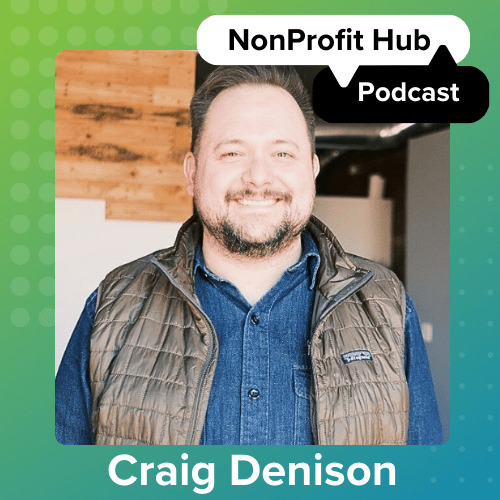The World Wide Web has certainly owned up to its name—it’s huge. The Internet and everything in it is constantly growing, and social media is no exception. With so much growth happening online, keeping up with the latest thing can feel like you’re always running to catch up.
That’s why we’re taking a step back to look at the big picture and diving into social media for nonprofits. Instead of trying to learn every feature of every channel at once, you can learn the basics and decide where you should be spending your time. In part one of this article, we’ll cover the big dogs of social media: Facebook Instagram, LinkedIn and Twitter. We’ve got handy tips and helpful tools to show you what each platform offers and how it can speak to your nonprofit’s needs.
Download the two-part Social Media Starter Guide here!
79% of all internet users
Facebook is the catch-all of every social media channel. You can share photos and videos, interact with your audience and expand your network of supporters. Facebook is used by the majority of internet users in every range from age 18 and up. All that’s to say, if you have to choose to focus on just one channel, Facebook is probably your best bet. This is a great start to social media for nonprofits.
Handy tips:
- Facebook is the most-used app, so make sure everything you’re putting out looks just as good on mobile as it does on your desktop.
- Boosting your posts can be a helpful and inexpensive way to get lots of eyes on the things that you’re sharing. When you’re setting up a boosted post, make sure to fill in demographics that fit your nonprofit as best you can. The more specific you can get, the more effective the boost will be.
- Video on Facebook is making a quick rise, so be sure to utilize it when you can. With Facebook’s auto-play feature, the beginning of your video will play on silent as users scroll by. The motion will be more eye-catching than a still photo.
Helpful tools:
Facebook scheduling. If it’s hard for you to find time in the day for social media, this can take a load off your shoulders. Carve out a chunk of time during your week to find content to share, then schedule it right on the platform. If other things come up later on, you won’t have to worry about posting.
If This Then That. IFTTT is able to connect your operations across a slew of platforms. You can create, share and react by syncing things through your Google Drive, social media, location and more. You can create your own “recipes” or search through an endless list of IFTTT’s own. If This Then That might be a lot to swallow at once, but never fear! There’s a YouTube tutorial for everything.
![]()
32% of all internet users
As with every social media platform, knowing your audience should be the first step. The vast majority of Instagram users are under 30 years old. If your nonprofit appeals to a younger audience, then Instagram is just the thing for you. If you’re focused on an older demographic, set your sights somewhere else.
Handy tips:
- Instagram is such a visual platform. It’s a great space to highlight your organization’s culture and to tell the stories of the people you’re impacting in a visual way.
- Instagram isn’t just for photos anymore. It has resources for sharing boomerang, timelapse, and live video. Experiment and get creative!
Helpful tools:
Later. Unfortunately scheduling on Instagram is still a no-go, but Later can help alleviate the stress of always having to post in real time. You can crop your photo, edit your caption and set the time to post on the app. When the time comes, it’ll send you a notification to post. Then, voila! With a few touches you can send it off into your Instagram feed.
Instagram stories. Instagram stories have taken the fast track to fame this year. Each video in your story will disappears after 24 hours, so you can quickly share fun moments without cluttering your account. You don’t need a ton of video production to get into this—a little creativity goes a long way. Take advantage of that by creating a storyline for people to follow as they watch.
![]()
![]()
![]()
![]()
29% of all internet users
LinkedIn has the networking side of social networking down pat. The platform has grown in the past year, and it’s looking like it’ll continue to be on the up-and-up in the foreseeable future. Here, you can find potential board members and supporters of your cause, hire employees and draw in volunteers. Facebook is great for when you’re leading the pack, but LinkedIn is perfect for networking with your followers and using their abilities for your nonprofit.
Handy tips:
- LinkedIn for Nonprofits has so many resources for organizations. Take a look around and see how to get a leg up on this platform.
- Spruce up your company page. This is the place that people will come to when they’re looking to connect with your nonprofit on LinkedIn. Add some photos, links to your website and connect with your staff and current supporters.
Helpful tools:
Groups. LinkedIn groups are just one of the many ways to network on this channel. You can ask for advice or share about your own interests. Groups can cover topics far and wide, from the general to the specific. Find some groups that relate to what you’re doing and add to the conversation.
LinkedIn Pulse. Pulse is a hub for professional news. Start out by exploring the feature; get a feel for how it works, read up on blogs and find some content to share on social media. After that, your nonprofit can explore how to publish on Pulse and leverage it for your benefit.
![]()
![]()
![]()
![]()
24% of all internet users
More than any other platform, Twitter is great for ongoing and real-time conversations. Nonprofits should use it to interact with supporters and to boost brand awareness. Twitter may not be right for your nonprofit, though. Take a good look at your audience and your resources before getting into the thick of it. If you don’t have the time to commit to sending multiple tweets every week, then your efforts might be better off on a different social site.
Handy tips:
- Tweet often! On most social media platforms, you should stick to posting no more than one or two times per day. On Twitter, not so much. Once you send a tweet out into the world, it’ll be old news before you know it.
- That being said, give a little time for each tweet to shine. We recommend tweeting once every hour or so until you start to see trends. From there, take a look at your analytics and see what works for you.
Helpful tools:
Twitter analytics. Taking a look at your analytics can provide some insight into what is and isn’t working. This platform gives you a broad overview of your audience, useful stats and how your tweets are performing.
DIY design tools. Adding a photo or a graphic to your tweet gives it a push in the right direction. If you want to spruce up your photos with cool effects but you’re short on time, there are lots of image apps that can help you out. Studio Design and Canva are both great places to start.
__________
Stay tuned for part two of this article! We’ll explore other social media channels and how you can make the most of them.






